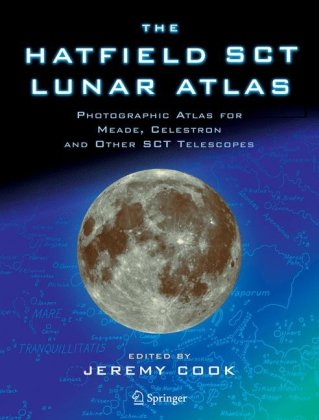

Most ebook files are in PDF format, so you can easily read them using various software such as Foxit Reader or directly on the Google Chrome browser.
Some ebook files are released by publishers in other formats such as .awz, .mobi, .epub, .fb2, etc. You may need to install specific software to read these formats on mobile/PC, such as Calibre.
Please read the tutorial at this link: https://ebookbell.com/faq
We offer FREE conversion to the popular formats you request; however, this may take some time. Therefore, right after payment, please email us, and we will try to provide the service as quickly as possible.
For some exceptional file formats or broken links (if any), please refrain from opening any disputes. Instead, email us first, and we will try to assist within a maximum of 6 hours.
EbookBell Team

0.0
0 reviews
ISBN 10: 1852337494
ISBN 13: 9781852337490
Author: Jeremy Cook
Part 1: How to Use the Atlas & Modern Observing Techniques
Introduction to its Use: A guide on how to navigate the atlas, locate features, and use the provided charts.
A Short Description of the Digital Re-mastering Technique: Explains how the original photographs were enhanced and merged with modern data to improve clarity.
A New Chapter on Modern Lunar Observing Techniques: This is a key addition to the new edition, likely covering topics like:
Digital imaging and astrophotography.
Transient Lunar Phenomena (TLP) observing programs.
Sketching and visual observing.
Part 2: The Photographic Atlas Plates and Key Maps
Plates 1-16 (with charts): This is the core of the atlas. It would be divided into sections, each containing:
Photographic Plates: Digitally re-mastered photographs of the lunar surface, presented as they appear through an SCT (North up, East left).
Detailed Key Maps: Overlaid maps or separate charts that identify and label key lunar features (craters, mountains, maria) on the corresponding plate. These maps are also "reversed" to match the SCT view.
Inset IAU-Standard Photographs: Smaller, non-mirrored images that allow users to compare the SCT view with the standard astronomical convention (South up, West left).
Part 3: Computer-Generated Visualizations
Sunrise and Sunset Visualizations: Computer-generated images of specific lunar areas, showing how they look under different illumination angles near the terminator (the line between light and shadow).
the hatfield sct lunar atlas
lunar field atlas
hatfield sct lunar atlas
hatfield moon
lunar shadow jtc
Tags: Jeremy Cook, Hatfield, Lunar